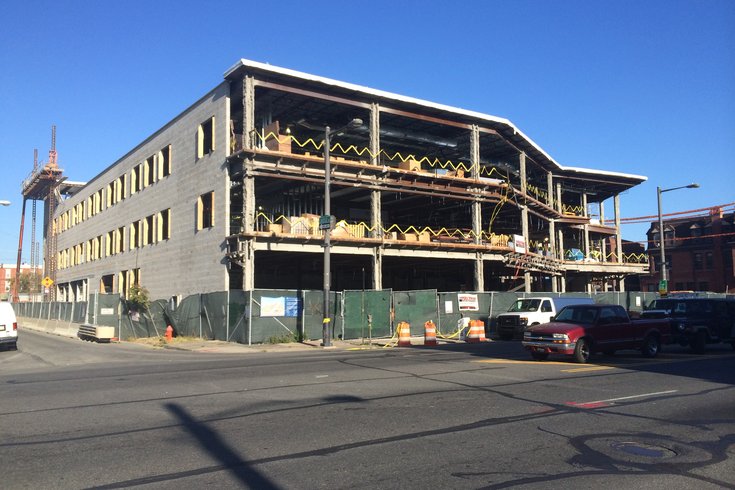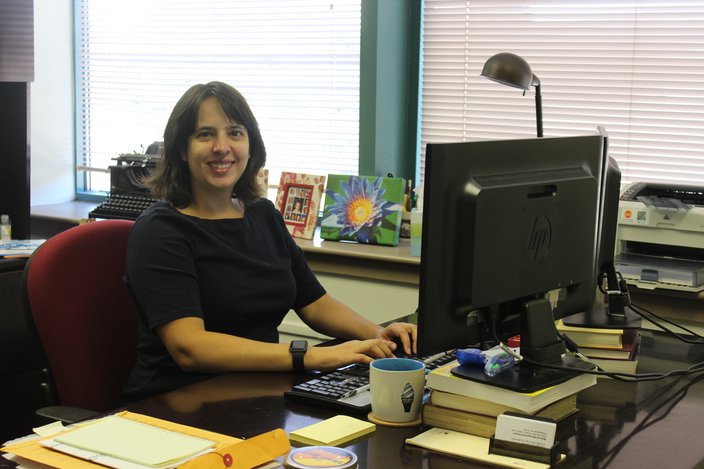
September 30, 2015
 Brandon Baker/PhillyVoice
Brandon Baker/PhillyVoice
The under-construction South Philadelphia Library, which has been closed since 2013.
The world is full of questions we all want answers to but are either too embarrassed, time-crunched or intimidated to actually ask. In the spirit of that shared experience, we've embarked on a journey to answer all of the questions that burn in the minds of Philadelphians -- everything from universal curiosities (What's it like to be shot wearing a bulletproof vest?) to Philly-specific musings (How do they clean the Liberty Bell?).
Have a question you're dying to have answered? Send an email to entertainment@phillyvoice.com, and we'll find an expert who can give you the answer you're craving.
If you've walked -- driven, run, scooted -- past the South Philadelphia Library being renovated at Broad and Morris streets, you've likely experienced nostalgic flashbacks to the days when more than construction materials packed its innards.
For those unaware, the renovation of the South Philadelphia Library, four other neighborhood branches and the Central Library is a project initiated through a $25 million grant from the William Penn Foundation. It's part of an attempt to modernize the Free Library and its branches, many of which haven't seen a touch-up for 60 years.
So, once home to thousands of books, seeing a major library under construction naturally prompts a curious thought: Where'd all those books go?
We reached out to Jennifer Maguire-Wright, chief manager of materials for the Free Library of Philadelphia, who clued us in.

What happens to the books at libraries like the one at Broad and Morris streets?
The materials in the South Philadelphia collection were mostly sent to other neighborhood libraries in the library system. Items that were in poor condition or outdated were withdrawn from the collection -- we call it “weeding,” in library lingo. Those items are typically offered to other city agencies for a period of time and then sold in book sales.
How do you determine which ones get the boot?
We have a collection development policy that includes details on how we keep our collections fresh and current. Typically, items are removed from the collection due to condition. Our books can be well-loved to the point that they are falling apart. For non-fiction, we have guides based on the content. A good example is health-related materials. Anything older than five years is looked at critically to see if there are newer titles on the topic ...
We have some tools that help us analyze our collection use by subjects and we sent items to the locations where we might have had low stock in that subject or where there was high interest in those subjects. This planning and moving process took months.
Do other libraries being renovated go through a similar process with the re-allocating and “weeding” of books?
Yes, we are already looking at the collections in our other neighborhood libraries that will be closing next year for renovations. We will begin weeding the libraries soon to remove items that are too worn out to hang onto. When we get rid of materials, we pay extra attention to anything that may be the last copy in the system and we have checks in place to make sure we re-order new copies if the title is still relevant for our collections. We also run reports to replace well-loved titles in one neighborhood with a copy from another library that might not have had as much interest in that topic or author there.
When the new libraries open, do they get a whole new stock of books?
The South Philadelphia Library will be receiving a new collection.
How many more books will the South Philadelphia Branch have than it did before?
The South Philadelphia Library will feature a slightly smaller, yet more refined non-fiction collection. Much research information is now more accurate and timely in our databases and other online resources. However, we are expanding the collection of community health resources, which will be a special focus in the new location. By taking into consideration the types of items that circulated most regularly in that location, the updated collection will specifically target the wants and needs of the community. Libraries in the 21st century are no longer just places for great books but are also true community spaces where creativity and collaboration can thrive. Taking this into account, the new South Philadelphia Library will include a living room, updated meeting rooms, special spaces for teens, children and pre-K customers, a new computer lab and so much more!
Do you have any sort of preservation method for stored books?
No, our only current “storage” area for books is an off-site shelving facility that is built to hold books and is climate-controlled, so it doesn’t require any special preservation methods.
Some books will be cleared out of the Central Library to make way for renovations, right? What happens to those?
Most of the titles removed from Central have been moved to our off-site shelving facility. Those items are still owned by the library and in our catalog, and we retrieve them for users upon request.
What's the oldest book you have stored?
The oldest items we have in the library are our cuneiform tablets. These tablets represent the oldest form of "books." "Cuneiform" refers to the wedge-shaped symbols which were impressed into clay with a stylus or writing instrument. The collection of over 2,800 clay tablets, dating from 3,000 B.C.E. to 300 B.C.E., was the gift of Mr. and Mrs. John Frederick Lewis and can be seen in our Rare Book Department at Parkway Central.